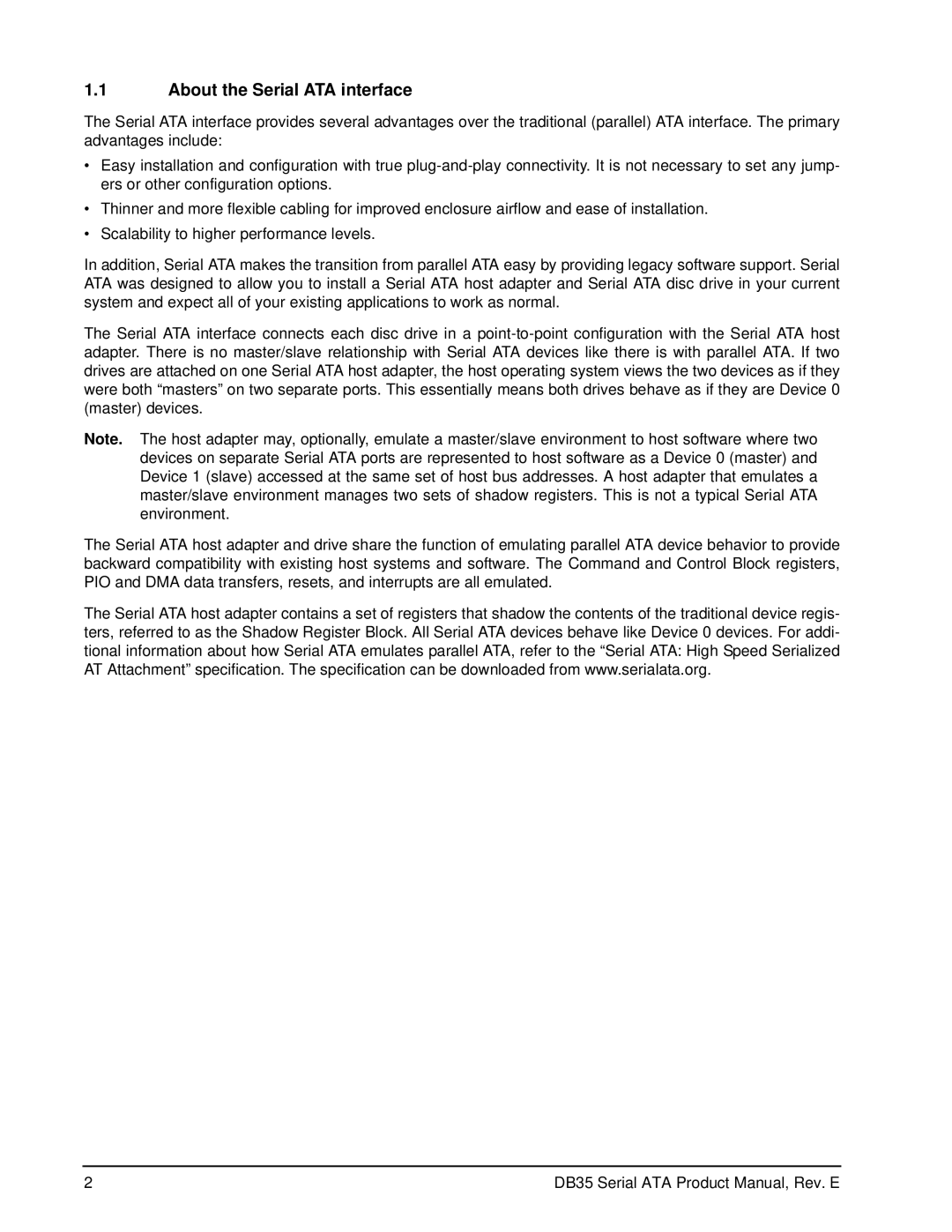ST3250823SCE, ST3400832SCE, ST3300831SCE, ST3200826SCE specifications
The Seagate ST3250823SCE, ST3300831SCE, ST3200826SCE, and ST3400832SCE are notable hard disk drives that exemplify Seagate's commitment to providing reliable storage solutions for both consumer and enterprise applications. These drives leverage advanced technologies and offer various characteristics that cater to different storage needs.The ST3250823SCE is a 250GB SATA hard disk drive designed for entry-level servers and desktop applications. It features a 7200 RPM spindle speed, ensuring swift data access and enhanced overall system performance. The drive's 8MB cache improves read and write speeds, allowing for more efficient data handling. Designed with durability in mind, the ST3250823SCE incorporates features like error correction codes and advanced power management, ensuring reliable operation over time.
Moving on to the ST3300831SCE, this drive offers a capacity of 300GB and is tailored for slightly more demanding applications. Like its predecessor, it boasts a 7200 RPM rotational speed, which helps maintain optimal performance for everyday computing tasks. The ST3300831SCE is also equipped with a SATA interface, making it compatible with a wide range of systems. Notably, its improved read/write speeds assist in reducing system bottlenecks, making it a suitable option for users who require extra storage without compromising speed.
The ST3200826SCE stands as a solid 200GB choice, particularly focusing on budget-conscious consumers. This model retains similar features to other drives in this series, including the 7200 RPM speed and SATA connection. Its reliability is enhanced through built-in technologies aimed at reducing data loss, thereby offering peace of mind for users who store critical information. The ST3200826SCE serves well for standard desktop usage and is a reliable option for archived data storage.
Finally, the ST3400832SCE, with its generous 400GB capacity, is positioned as a robust solution for users needing more substantial storage. Like its siblings, it operates at 7200 RPM, promoting fast data transfers. This model is particularly suitable for multimedia applications, such as video editing or gaming, where higher storage capacity coupled with quick access times is essential. The drive's design also incorporates features that support thermal management, ensuring optimal performance under load.
In summary, the Seagate ST3250823SCE, ST3300831SCE, ST3200826SCE, and ST3400832SCE collectively represent a diverse range of storage solutions that emphasize speed, reliability, and efficiency. Each model caters to different storage requirements, ensuring that users can find an appropriate solution tailored to their needs. These drives are characterized by their 7200 RPM speeds, SATA interfaces, and advanced technologies aimed at safeguarding data, making them a solid choice for both everyday users and professionals.
